Hair Follicles

Sommaire
Hair follicles form the very foundation of our hair. These small, complex structures determine the health, growth and appearance of our hair. As hair transplant specialists, we offer a detailed guide to understanding how they function and their significance.
What is a Hair Follicle?
A hair follicle is a microscopic structure anchored in the skin, responsible for hair production and growth.
This sophisticated biological unit doesn’t merely grow hair – it plays an essential role in its health and life cycle. Each follicle functions as a microscopic production unit, continually producing new hair through a complex cyclical process. The scalp contains an average of 100,000 hair follicles, each capable of generating several hairs over a lifetime.

The importance of hair follicles extends beyond simple hair production. They contribute to the body’s thermal regulation, protection against UV rays, and even the scalp’s tactile sensitivity. The appearance of our hair, directly linked to the health of our follicles, plays a significant role in our self-confidence and personal image.
Understanding how hair follicles work is essential to comprehending hair problems and their potential solutions. Whether you are suffering from hair loss or simply looking to optimise your hair’s health, an in-depth knowledge of hair follicles is the first step towards an enlightened approach to hair health.
Structure and Anatomy of the Hair Follicle
The Hair Bulb
The hair bulb, located at the follicle’s base, is this structure’s true heart. It contains matrix cells, specialised stem cells that divide rapidly to form the hair shaft. These cells are among the most active in the human body, dividing every 23 to 72 hours during the active growth phase. The bulb is also where melanin, the pigment responsible for hair colour, is produced and incorporated into the growing hair shaft.
The Dermal Papilla
The dermal papilla, a pear-shaped structure at the base of the follicle, is crucial to the growth and life cycle of the hair. Richly vascularised, it supplies the nutrients and oxygen needed for the rapid growth of bulb cells. The dermal papilla also contains hormone receptors that regulate the hair growth cycle. In cases of androgenetic alopecia, these receptors become sensitive to dihydrotestosterone (DHT), leading to progressive follicle miniaturisation.
The Epithelial Sheaths
The outer and inner epithelial sheaths play complementary roles. The outer sheath surrounds the follicle and connects it to the surrounding dermis. It contains stem cells in a region called the ‘bulge’, which are essential for the renewal of the follicle at each cycle. The inner sheath, comprising three layers (Henle, Huxley and cuticle), guides hair growth and determines its shape. This sheath disintegrates at the opening of the sebaceous gland, allowing the hair to emerge freely.

The Sebaceous Gland
The sebaceous gland, attached to the hair follicle, produces sebum, a natural oily substance that lubricates and protects the hair and surrounding skin. Sebum helps to keep the hair hydrated and forms a protective barrier against external aggressions.
The Hair-Retaining Muscle
The hair shaft muscle, a small smooth muscle attached to the follicle, is responsible for the ‘goosebumps’ phenomenon and helps to excrete sebum.
The Hair Shaft
The hair shaft, the visible part of the hair, is composed mainly of keratin. It comprises three layers: the medulla in the centre, the cortex which gives the hair its strength and elasticity, and the cuticle, the protective outer layer.
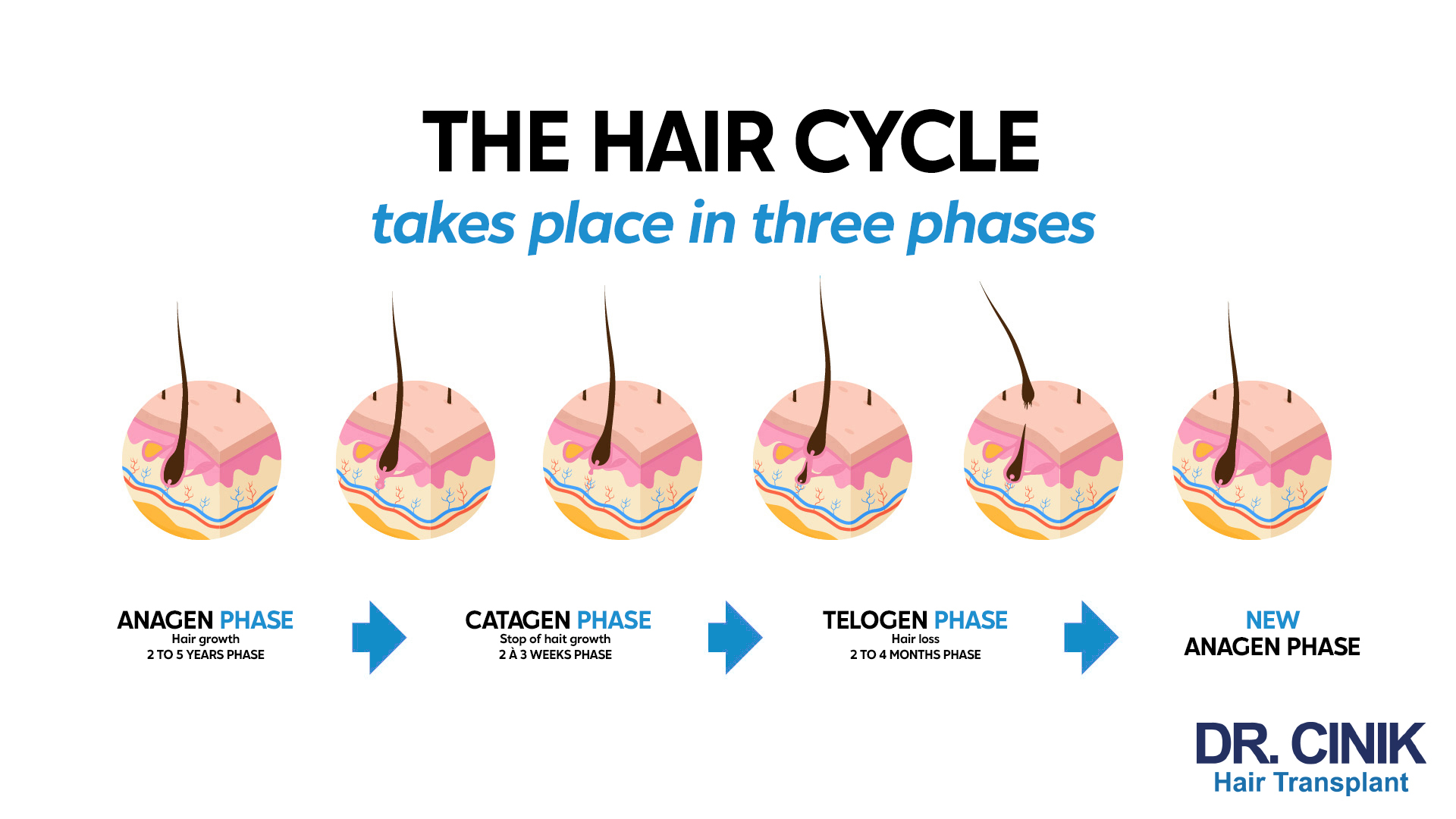
The Life Cycle of the Hair Follicle
Anagen Phase
The anagen phase, or growth phase, lasts an average of 2 to 6 years, but can vary considerably depending on the individual and the area of the body. This is the active phase of hair growth, when the cells of the hair bulb divide rapidly, producing new cells that form the hair shaft. At any one time, around 85-90% of the hair on the scalp is in this phase. The length of this phase determines the maximum length a hair can reach and is influenced by genetic, hormonal and nutritional factors.
Catagen Phase
The catagen phase, or transition phase, is a short period of 2-3 weeks when the hair follicle enters a transition phase. The production of new cells slows down and the follicle retracts. The hair bulb detaches from the dermal papilla, interrupting the nutritional supply. The hair stops growing but remains attached to the follicle. This phase marks the end of active hair growth and prepares the follicle for the resting phase.

Telogen Phase
The telogen phase, or resting phase, lasts 2-4 months on average. The follicle is at complete rest and the hair, which has become ‘club hair’, no longer receives nutrients and no longer grows. At the end of this phase, the hair falls out naturally, often when brushing or washing. While the club hair is still in place, a new follicle begins to form underneath, preparing the start of a new anagen cycle.
Exogenous Phase
A fourth phase, less often mentioned, is the exogenous or fall phase. It represents the moment when the hair actually detaches from the follicle and can be considered as an extension of the telogen phase.
See our full article on the hair cycle
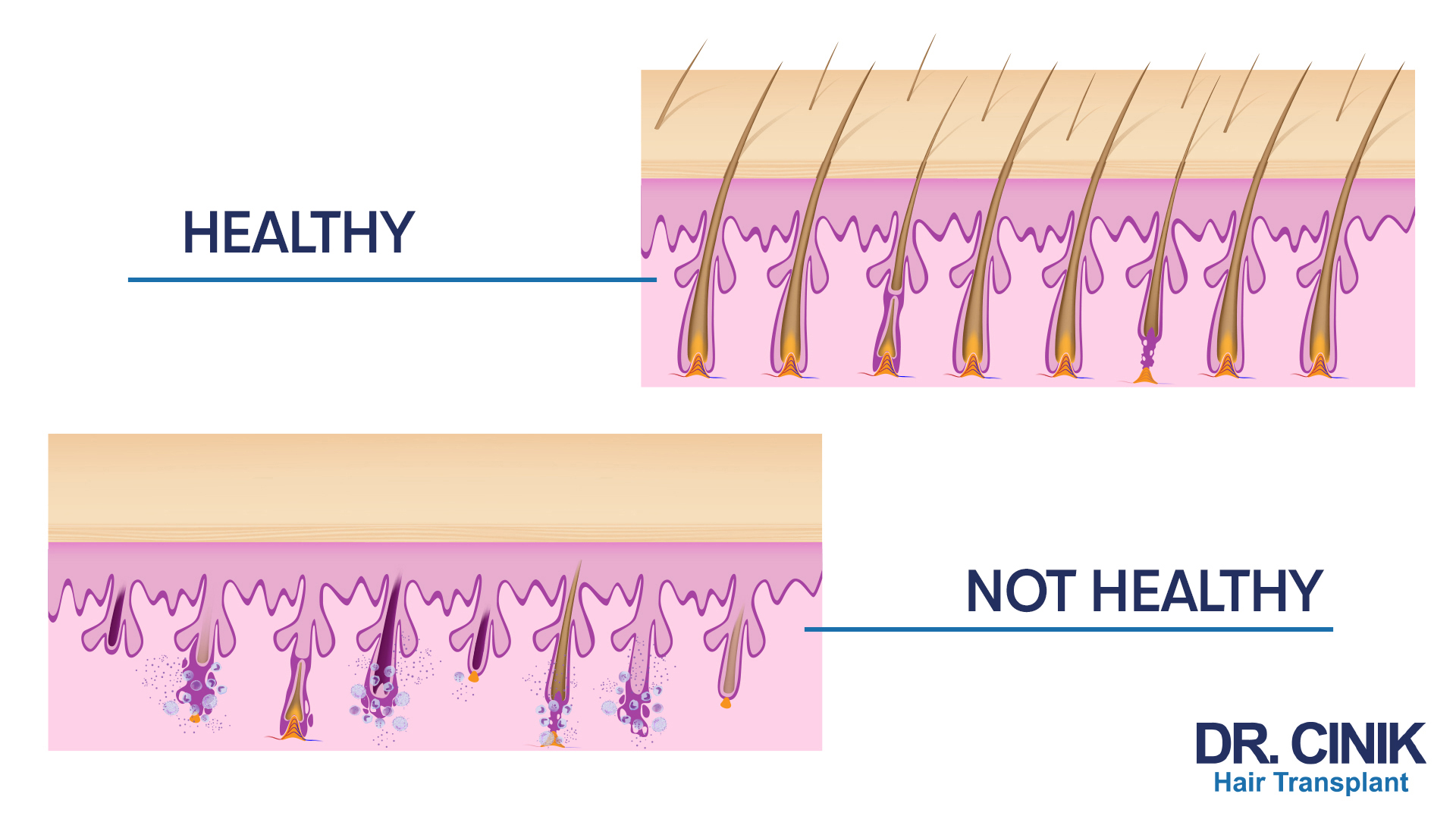
Factors Influencing Follicle Health
Genetic Factors
Genetic factors play a major role. Heredity largely determines the density, texture and life cycle of hair follicles. Certain genes can increase the sensitivity of follicles to androgenic hormones, leading to androgenetic alopecia. Genetic variability also explains why some people naturally have longer or thicker hair.
Hormonal Influence
Hormones have a significant impact on follicle health. Androgens, particularly dihydrotestosterone (DHT), can cause follicle miniaturisation in genetically predisposed individuals. Thyroid hormones and hormonal changes associated with pregnancy can also temporarily alter the hair cycle.

The Role of Nutrition
Nutrition plays an important role. Adequate protein intake is essential for hair formation. An iron deficiency can lead to diffuse hair loss. B vitamins, particularly biotin, and minerals such as zinc and selenium are important for hair health.
See our full article on nutrition for healthy hair
Environmental and Lifestyle Factors
Environment and lifestyle are also important. Exposure to pollution and UV rays can damage follicles. Chronic stress disrupts the hair growth cycle, while smoking can reduce blood flow to the follicles.
Impact of Hair Treatments
Hair treatments and daily care can affect follicle health. Excessive use of chemicals such as dyes or bleaches, as well as tight hairstyles or frequent use of heated tools, can stress follicles.
Influence of Medication and Medical Problems
Certain medications and medical treatments, including chemotherapy, can temporarily or permanently affect follicle function. Medical conditions such as autoimmune diseases can also disrupt the hair cycle.

Effects of Age
Age plays an unavoidable role. Over time, hair follicles can naturally become less active, leading to thinning hair.
A holistic approach to treating hair problems is essential. By taking all these factors into account, it is possible to develop personalised and effective treatment strategies. At our clinic, each patient benefits from a comprehensive assessment that takes these different aspects into account to determine the best treatment approach, whether this involves medical treatments, lifestyle changes or advanced hair transplant procedures.
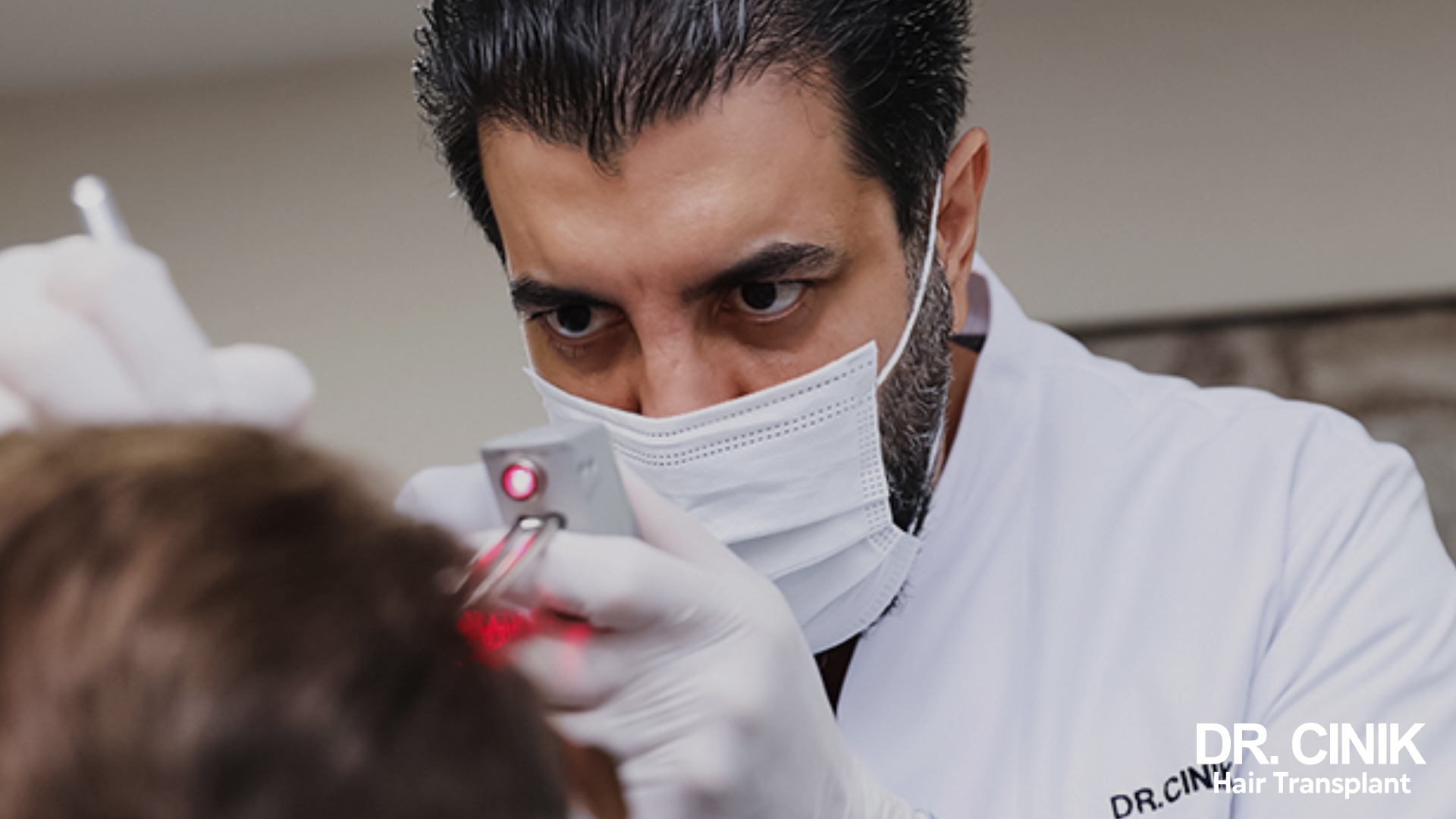
Hair Problems and Their Treatment
Hair follicle problems can manifest themselves in a variety of ways, each requiring a specific treatment approach. Understanding the link between these problems and their potential treatments is essential for effective management.
Androgenetic Alopecia
This common form of hair loss is caused by a genetic sensitivity to androgens.
Treatment Options
- Minoxidil: Applied topically, it stimulates scalp microcirculation and prolongs the hair growth phase.
- Finasteride: This oral medication blocks the conversion of testosterone into DHT, thereby slowing down the miniaturisation of follicles.
- FUE hair transplant: For advanced cases, this surgical technique offers a lasting solution by transplanting DHT-resistant follicles.

Alopecia Areata or Alopecia
This autoimmune disease causes patchy hair loss.
Therapeutic Approaches
- Corticosteroids: Applied locally or injected, they reduce inflammation and suppress the immune response.
- Topical immunotherapy: Substances such as diphenylcyclopropenone can “distract” the immune system from attacking the follicles.
- PRP (Platelet Rich Plasma): This therapy uses the patient’s own growth factors to stimulate follicle regeneration.
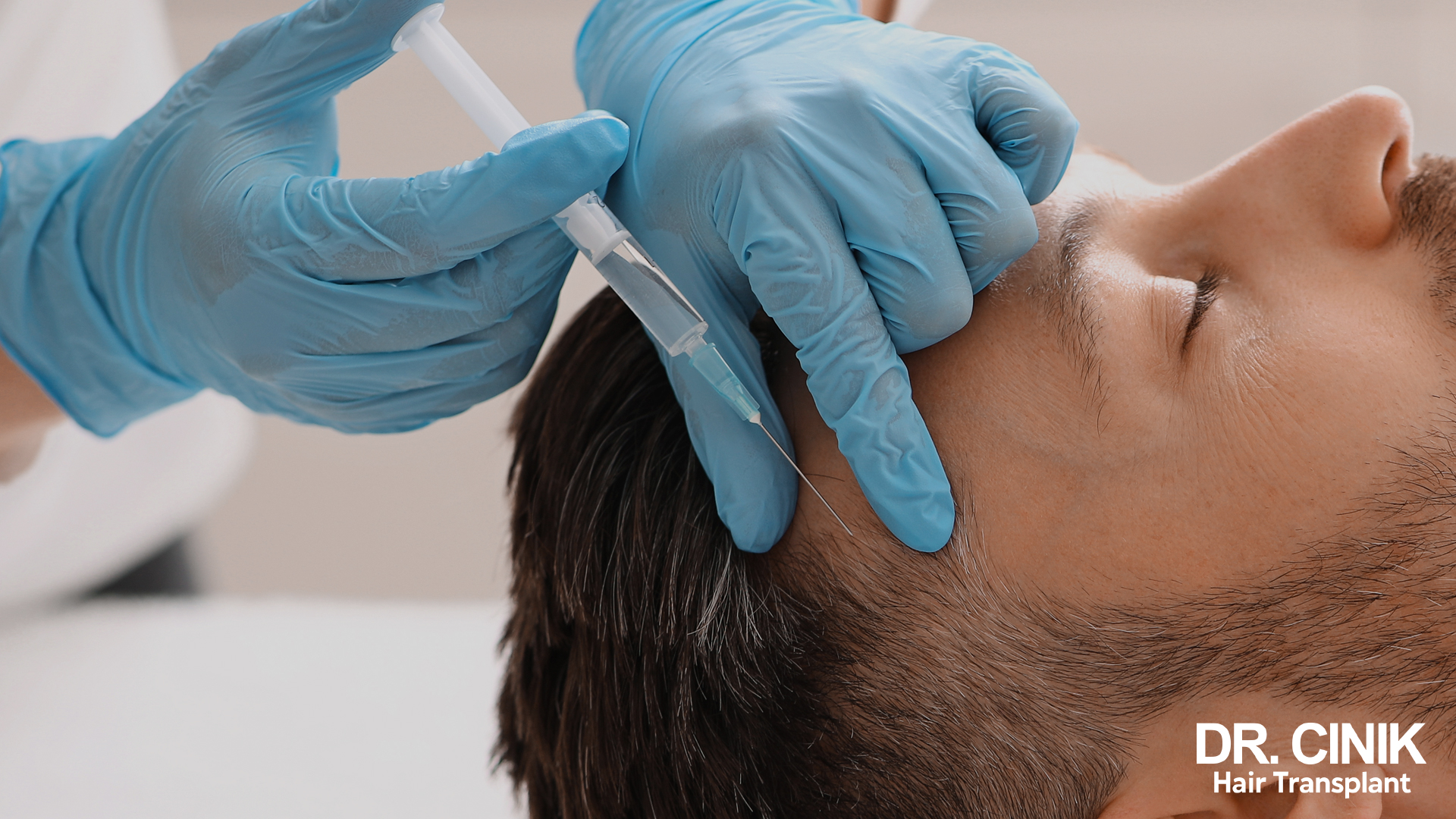
Telogen Effluvium
This temporary hair loss is often linked to stress.
Treatment Strategies
- Nutritional supplements: Iron, zinc and B vitamins to support hair growth.
- Stress management: Relaxation techniques and sometimes cognitive-behavioural therapy.
- Minoxidil: Can be used temporarily to accelerate regrowth.
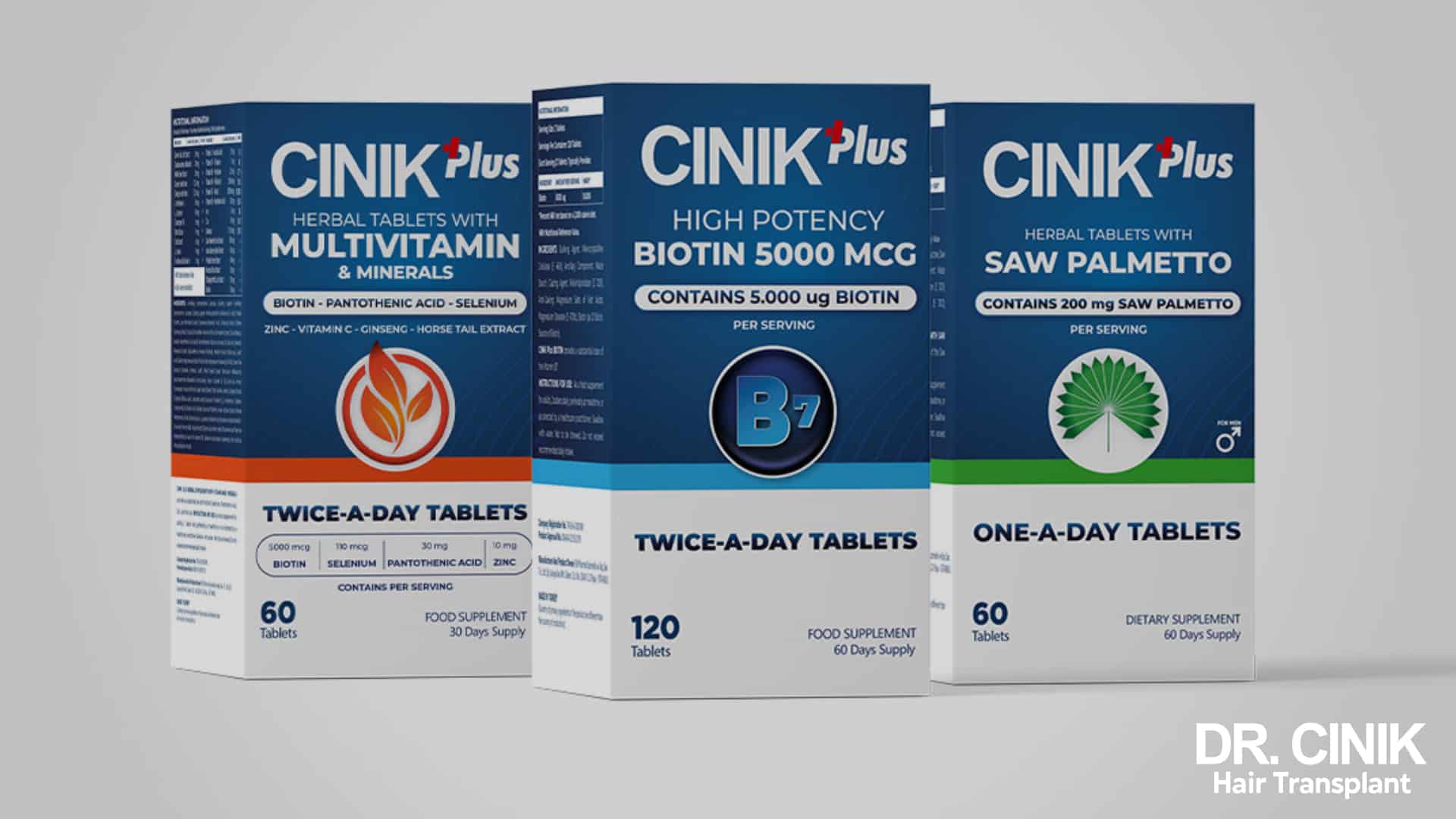
Folliculitis
This inflammation of the hair follicles may be bacterial or fungal in origin.
Treatment Options
- Topical or oral antibiotics for bacterial infections.
- Antifungals for cases caused by fungi.
- Appropriate scalp care to prevent recurrence.

Trichotillomania
This psychological disorder is characterised by compulsive hair pulling.
Multidisciplinary Approach
- Behavioural therapy to address compulsive behaviour.
- Relaxation and stress management techniques.
- In some cases, psychiatric medication may be prescribed.
- Hair transplants for areas of permanent loss, once the behaviour has been controlled.

Complementary Approaches
Innovative Therapies
Certain therapies can be beneficial for several types of hair problem:
- Mesotherapy: Injection of nutrient cocktails directly into the scalp to nourish the follicles.
- Low-intensity laser therapy: Using low-energy light to stimulate cellular activity in the follicles.
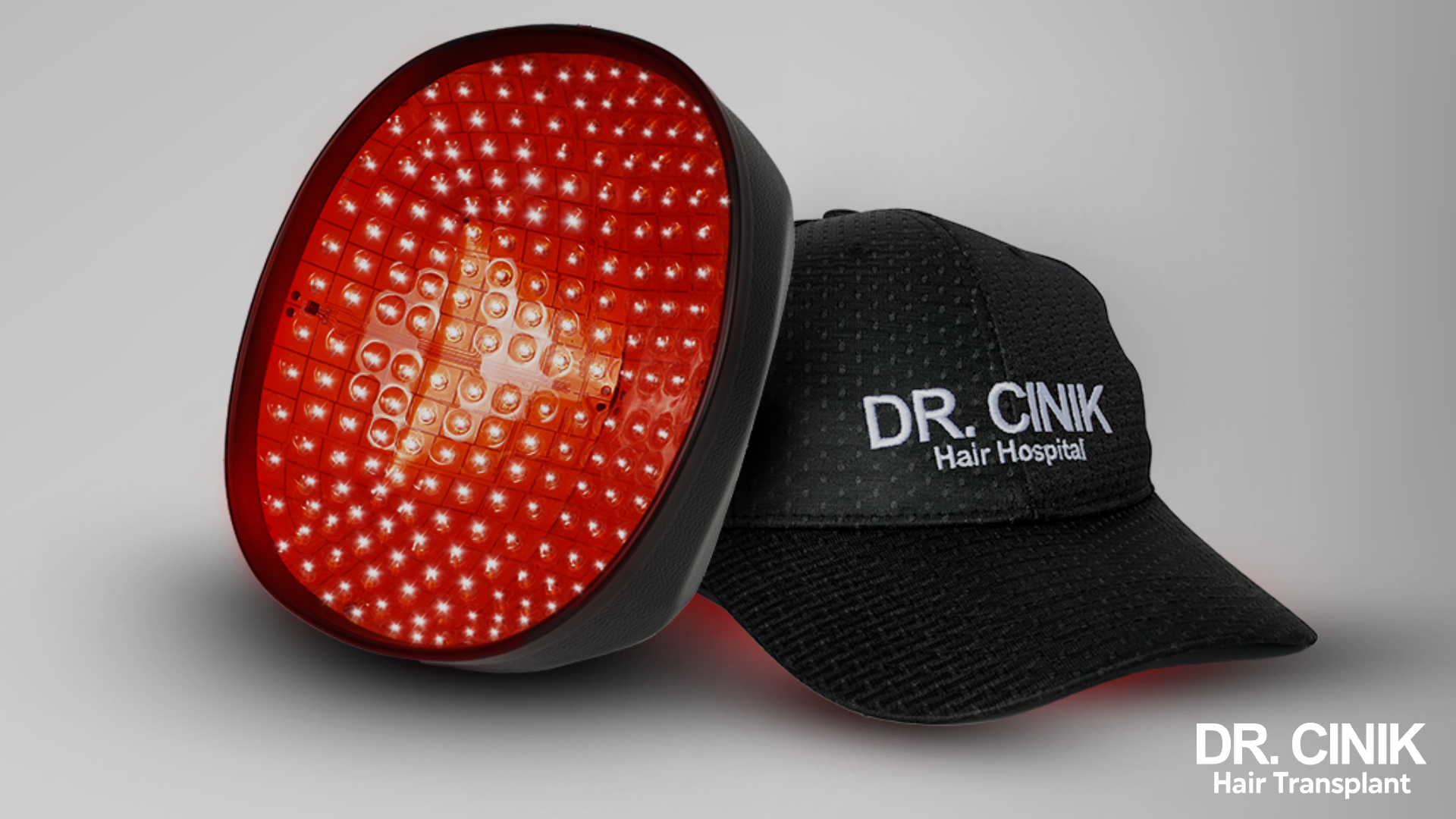
Holistic Approach
Combination of Treatments
A combination of treatments with a holistic approach generally offers the best results. For example, a patient suffering from androgenetic alopecia could benefit from treatment with finasteride, complemented by applications of minoxidil, PRP sessions, and possibly a hair transplant for the most affected areas.

Overall Hair Health
We emphasise the importance of a holistic approach to hair health, including a balanced diet, stress management and appropriate hair care. These measures can not only improve the effectiveness of specific treatments, but also prevent the onset of new hair problems.

Personalised Care
By understanding the links between different hair problems and their treatments, we can offer tailor-made solutions, adapted to each patient’s unique needs. Our aim is not only to treat the visible symptoms, but also to address the underlying causes for optimal long-term hair health.
Preventing and Maintaining Healthy Hair Follicles
Daily Hair Routine
A proper daily hair routine is crucial. This involves regular washing with gentle products suited to your hair and scalp type. Gently massaging the scalp when shampooing can stimulate blood circulation, which is good for the follicles.
Diet and Nutrition
Diet plays a fundamental role in hair health. A balanced diet rich in protein, iron, B vitamins and antioxidants provides essential nutrients for hair follicles. Foods such as eggs, nuts, leafy green vegetables and oily fish are particularly beneficial.
Stress Management
Stress management is an often overlooked but crucial aspect. Chronic stress can disrupt the hair growth cycle. Relaxation techniques such as meditation, yoga, or simply regular physical activity can help reduce stress and its harmful effects on follicles.
Choice of Hair Products
It’s important to use the right hair care products. Avoid aggressive chemical treatments and high-temperature styling tools, which can damage follicles. Opt for natural products and treatments that are gentle on your hair.
Regular Medical Check-ups
Regular check-ups with a specialist are recommended, especially if you have a family history of hair loss. Early diagnosis means that any problems can be tackled quickly and more effectively.
By following this advice and adopting a preventative approach, you can significantly improve the health of your hair follicles and maintain strong, vigorous hair in the long term.
Conclusion
Hair follicles, although tiny, play a crucial role in our appearance and well-being. Understanding how they work, the factors that influence them and how to keep them healthy is essential for anyone who wants to look after their hair. From the complex structure of follicles to their fascinating life cycle and the many factors that can affect their health, we have explored the essential aspects of these remarkable biological units. Advances in the diagnosis and treatment of hair problems now offer many options for those facing hair-related challenges.



